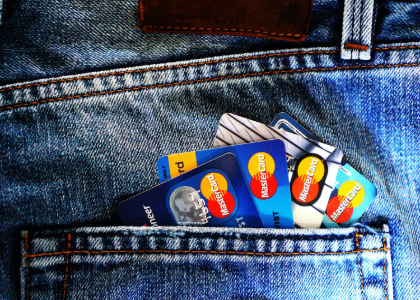Blog

How To Start A New Business And Stand Out With Branding
Starting a new business is an exciting yet challenging journey. From filing legal paperwork and creating a business plan to developing a product or service, there are countless hurdles to overcome. Perhaps that is why so many entrepreneurs overlook the importance of branding.
Branding is often viewed as the face or visual representation of your business. But an effective brand offers far more than that. A robust brand can differentiate your business from competitors, build trust with customers, and ultimately drive sales. It gives your customers an emotional reason to choose your business and to feel connected to its success.
So whether you are launching something new or looking to revamp an existing project, this article will help you create a brand that resonates with your target audience and drives business growth. We will explore the role of branding in promoting your business and offer tips on how to stand out in the marketplace.
The Role of Branding in Promoting Your Business
Branding is an essential piece of the marketing process because it helps to establish an emotional connection with the target audience. This connection is built on trust, shared values, and a curated impression of your business.
Branding and its purpose
Branding has the power to set your business apart from others and give you an edge in a competitive industry.
It begins with the process of creating a unique name, image, and identity for your business that differentiates it from competitors. But it doesn't end there. Branding is an ongoing effort to consistently communicate what you stand for and why customers should choose your business. This includes your values, personality, visual aesthetic, and overall positioning.
Your brand is the bridge between you and your customers and it influences how your business is perceived.
How branding supports promotional efforts
Branding supports businesses' promotional efforts by providing a quickly recognizable identity. This makes it easier for customers to connect with the business, remember it, and follow it across different channels.
A well-crafted brand also conveys a sense of credibility, reliability, and quality. It tells customers that you understand their needs and can provide solutions. For a new business trying to establish itself, this first impression can be invaluable.
Customers are more likely to place their time, money, and trust in the hands of a business that conducts itself with this type of professionalism. This indicates that effective branding can improve conversion rates and, in turn, drive sales.
How to Use Your Competitors' Mistakes to Your Advantage
It's always important to take a step back and analyze your competitors' branding. What is working for them? What isn't? By taking note of their missteps, you can identify trends, come up with new ideas, and avoid costly mistakes.
Common branding mistakes
By studying other businesses in your niche, you can spot potential miscues. Here are a few common branding mistakes that businesses often make:
Inconsistency: Failing to maintain a consistent brand identity across all channels and touchpoints can confuse customers and dilute brand recognition.
Lack of differentiation: Failing to differentiate your brand from competitors can make it hard for customers to understand what makes your business unique and why they should choose it over others.
Ignoring the target audience: Building a brand that doesn't resonate with the target audience can make it difficult to connect with them, regardless of the quality of your product or service.
Poor design choices: Bad design choices, such as using outdated or unappealing visuals, can turn customers off and create an unprofessional impression.
Not adapting to change: Failing to evolve as a brand and keep up with changing trends, customer preferences, and market demands can lead to stagnation and missed opportunities.
How to capitalize on your competitors' weaknesses
After identifying your competitors' branding mistakes, you can use this information to capitalize on their weaknesses and improve your own brand. Here are a few ways to do so:
Emphasize your USP: Take note of where your competitors are falling short in terms of differentiation and use this to communicate your unique selling proposition (USP). Highlight what sets your brand apart and position yourself accordingly.
Use modern design: If your competitors are making poor design choices, take advantage of this by investing in high-quality visual branding. Make sure your brand's design is appealing and the difference will be striking.
Stay engaged: If your competitors aren't actively engaging with their target audience, you'll have a great opportunity to stand out. Pour into your social media channels, start conversations, connect with influencers, and build relationships with your customer base.
Be adaptable: Stay up-to-date on changing trends and market demands and be willing to adapt your brand. If your competitors are falling behind in terms of innovation, capitalize on this by positioning yourself as a more forward-thinking brand.
Offer better customer experiences: Constantly look for ways to improve on the customer experience that your competitors are providing. Whether it's through better customer service, faster shipping, or more flexible return policies, make sure you offer something valuable that creates a positive impression with customers.
How to Design a Distinctive Brand
Creating a cohesive and distinctive brand identity is key to standing out. Here is a step-by-step guide on how to do just that, even in a crowded marketplace:
Define your unique value proposition: Identify what your business does better than anyone else. Think about the qualities and benefits that only you offer. Use this information to develop a value proposition that clearly communicates your unique selling point.
Conduct thorough market research: Research your competition, analyze their strengths and weaknesses, and begin to connect with your target audience. Any initial ideas for your brand should be based on these research findings.
Develop your brand identity: Your brand identity is the visual representation of your business. Create a logo, color palette, typography, and imagery that resonate with your target audience but don't resemble others on the market. Ensure that your branding is immediately recognizable and memorable.
Craft your brand messaging: Create clear and consistent messaging that communicates your values and brand personality. Take a tone of voice that is distinct and keep it consistent across social media, email campaigns, and other marketing materials.
Invest in content marketing: Content marketing is your opportunity to demonstrate how your brand is different from the competition. Regularly publish quality content that educates, entertains, or inspires your target audience. These interactions create visual awareness, establish trust, and reinforce your brand messaging.
Build relationships with your customers: Provide excellent service and always go the extra mile for your customers. Encourage feedback of all kinds and use it to either improve your products or services or to win all new customers.
Building a brand that stands out doesn't happen overnight — it's an ongoing process. And it takes more than a unique name or a flashy logo. But if you follow this 6-step guide, you can start to differentiate your business.
Just remember to keep a close eye on the market and always focus on delivering value to your customers. In doing so, you will have all you need to begin developing a strong, recognizable brand.
More tips and tricks on the blog


